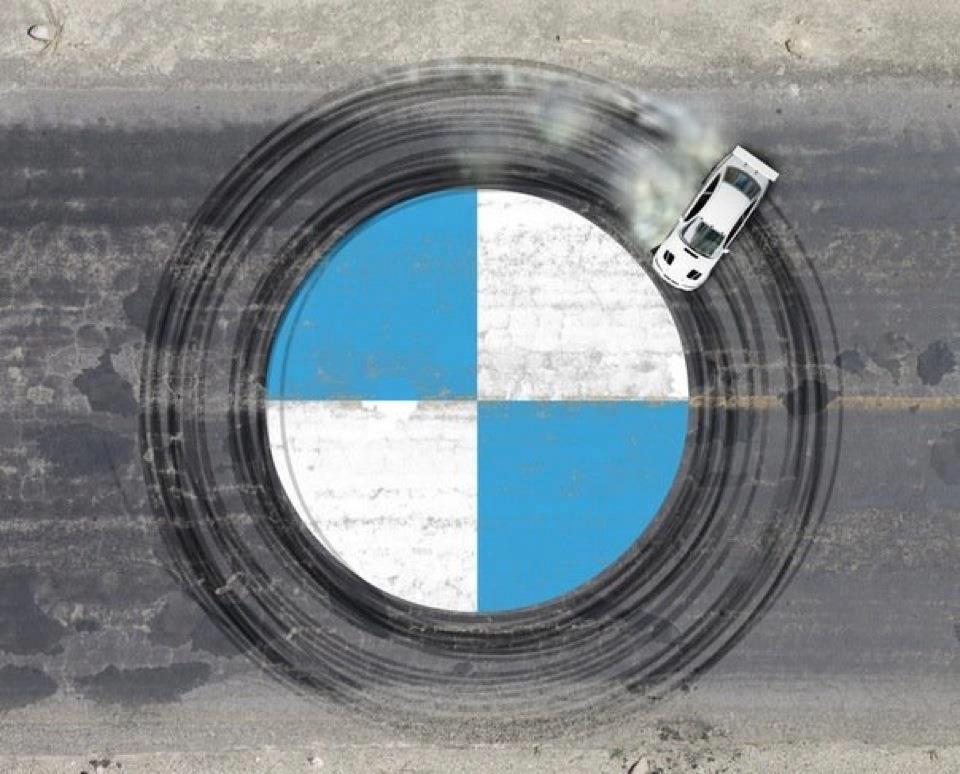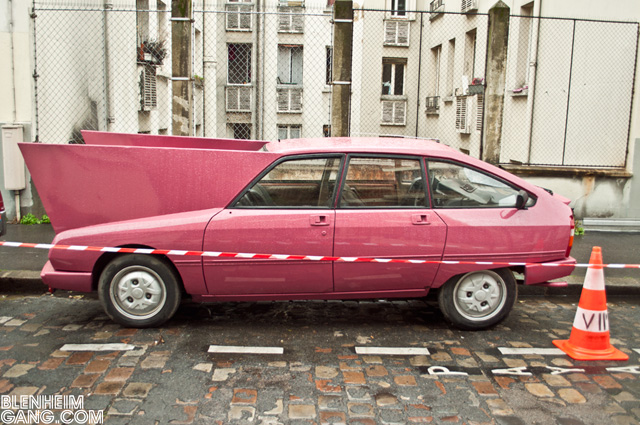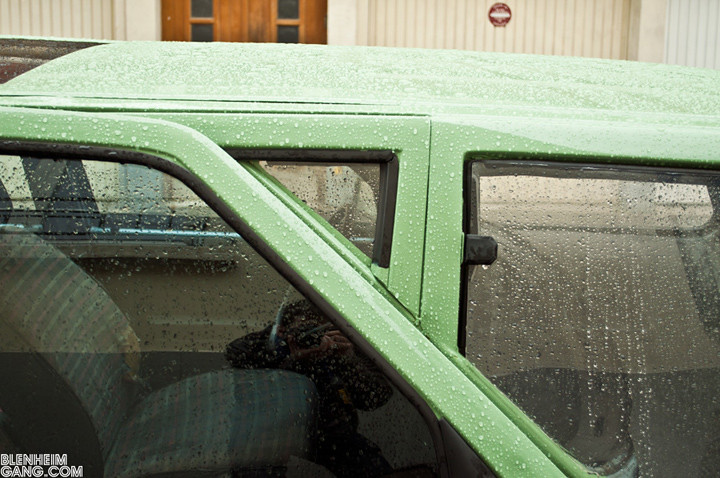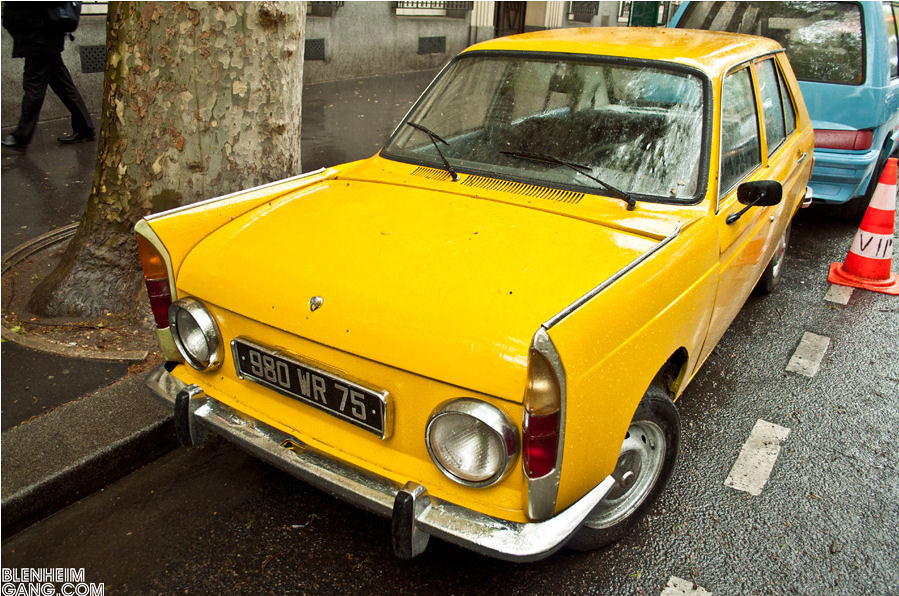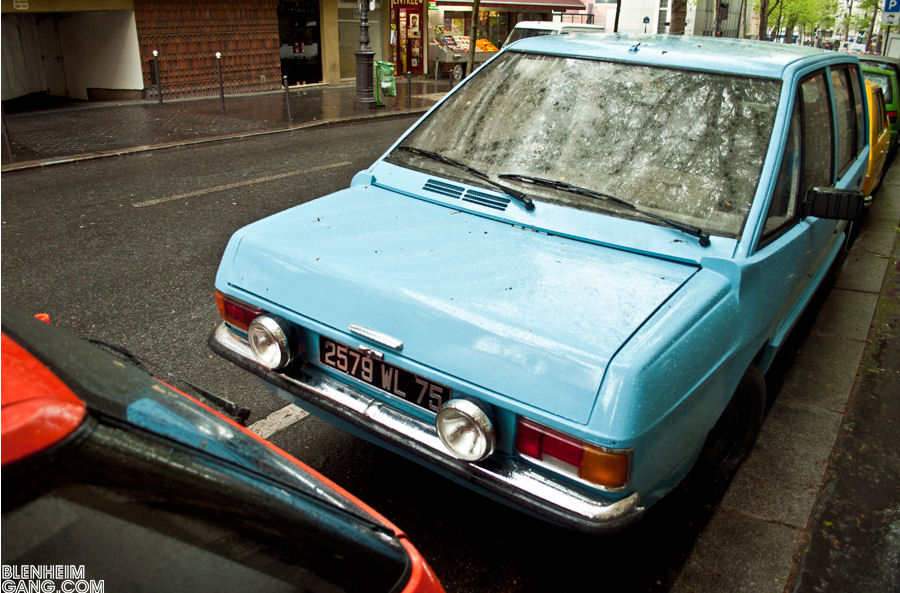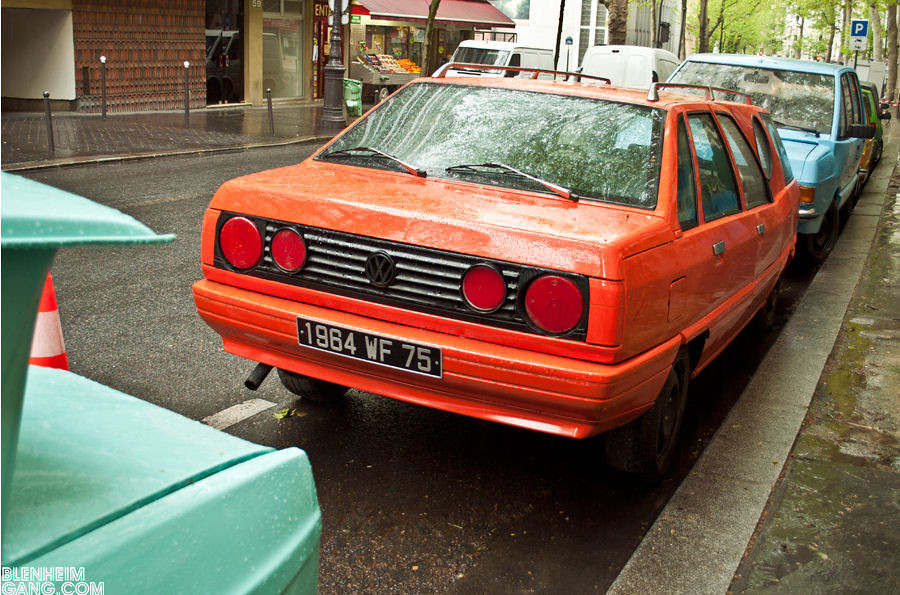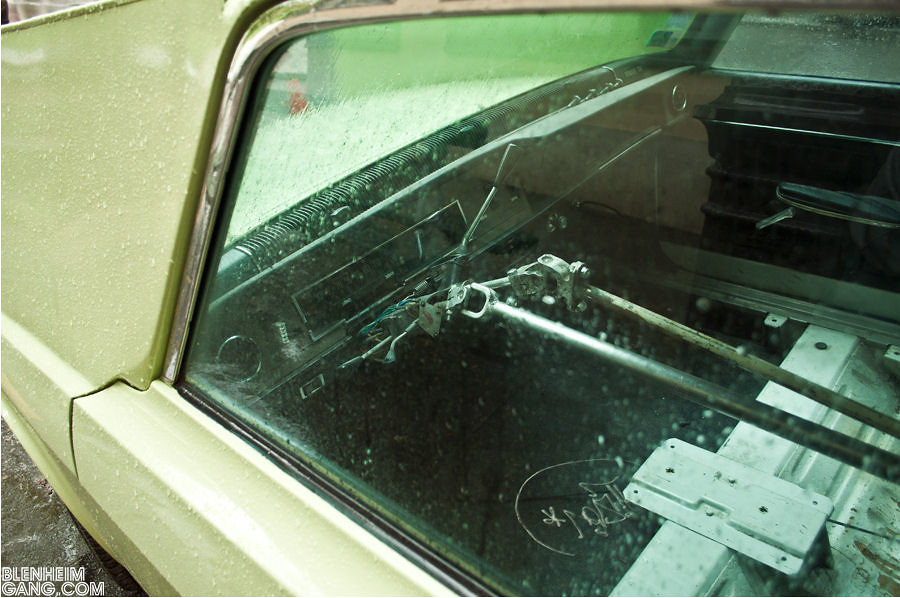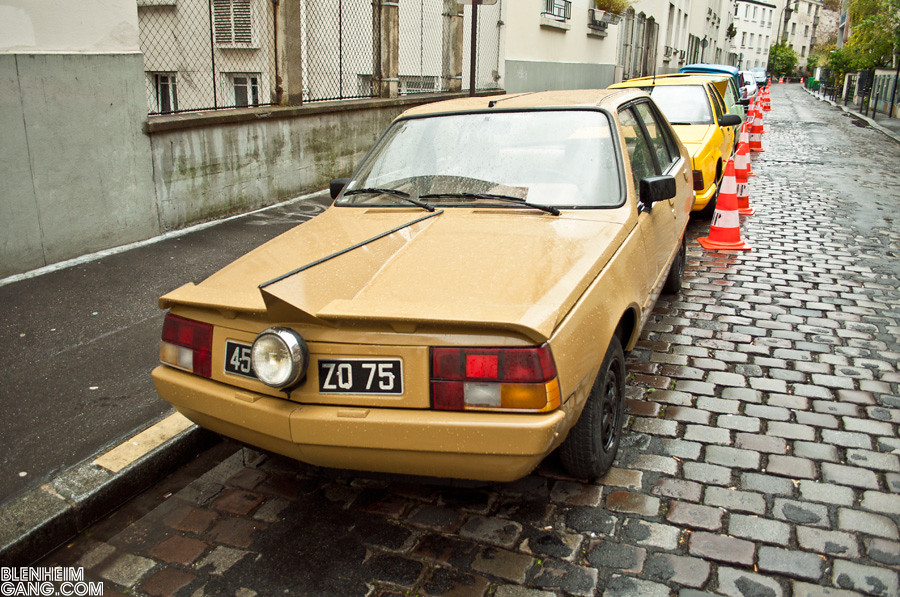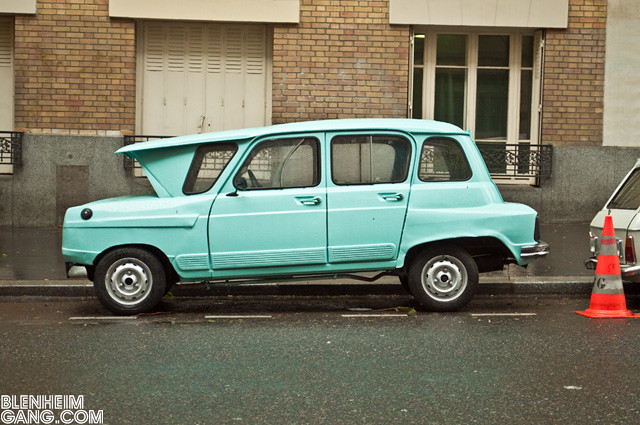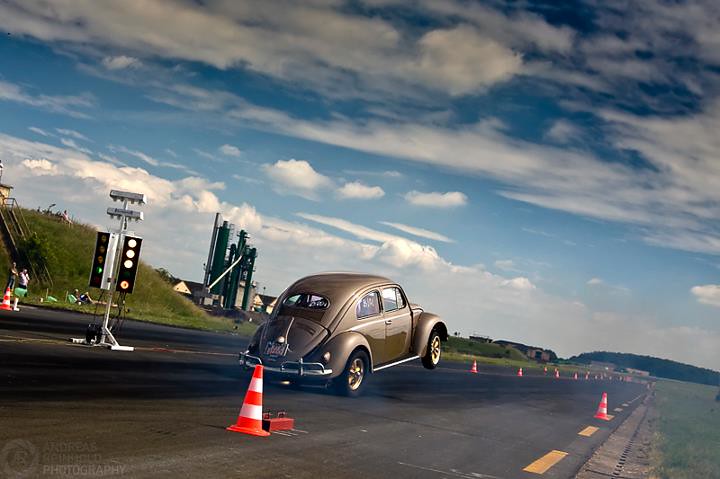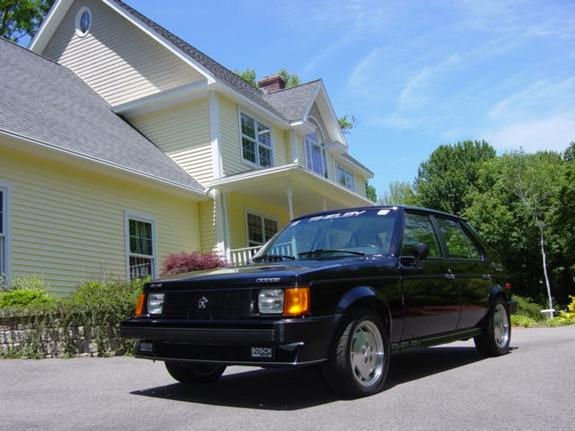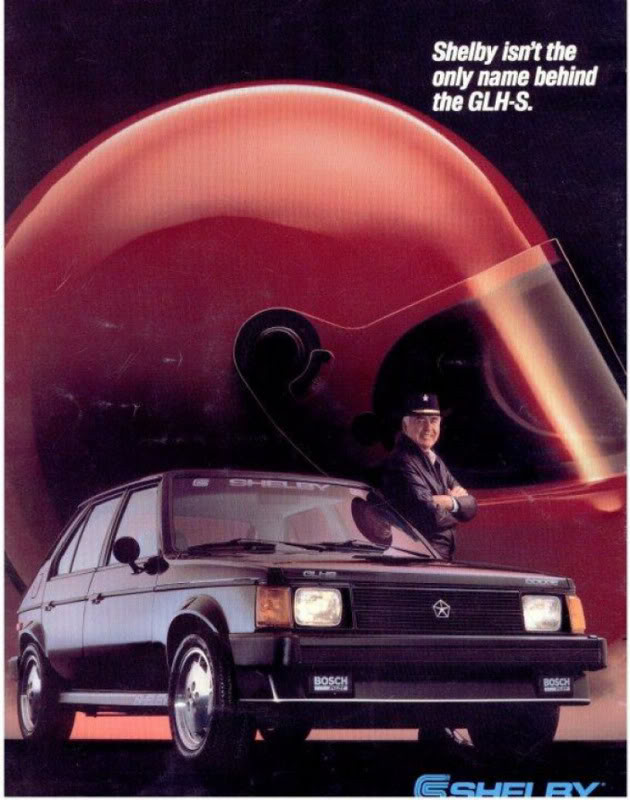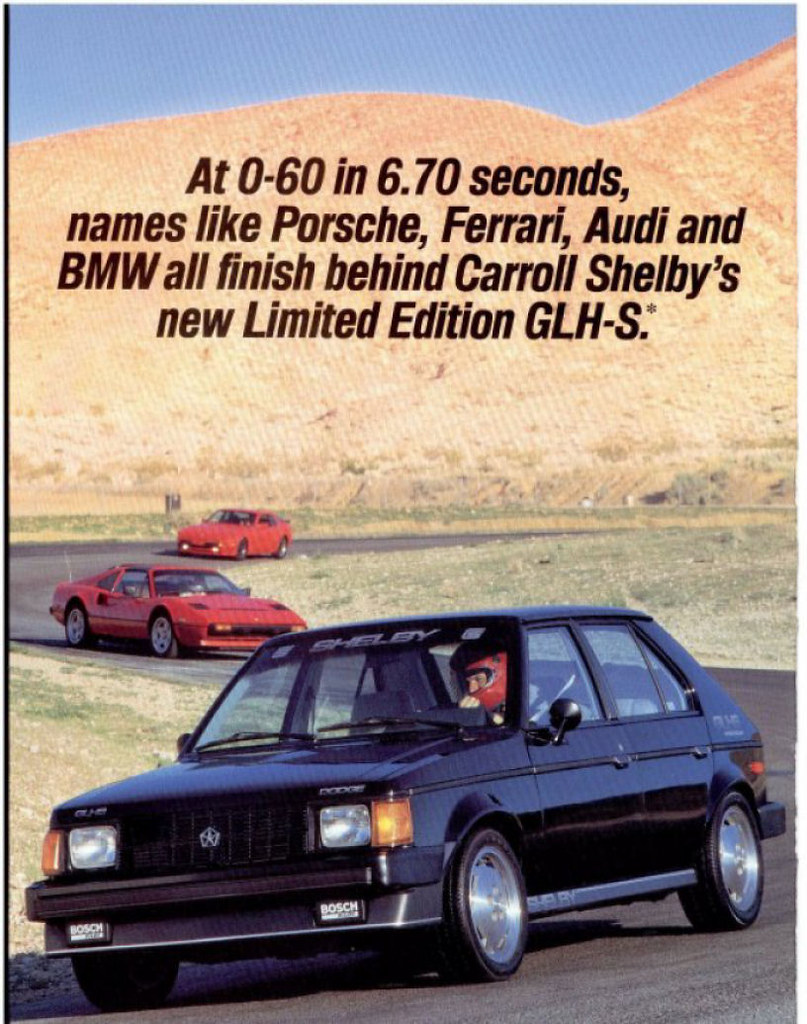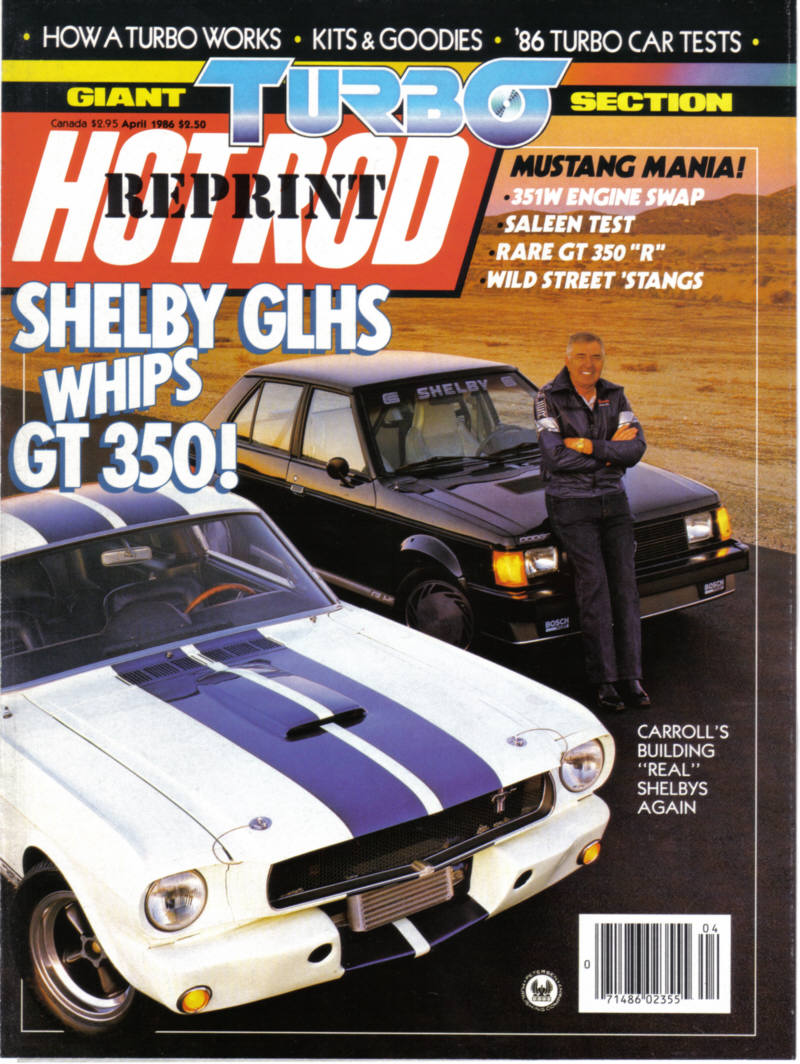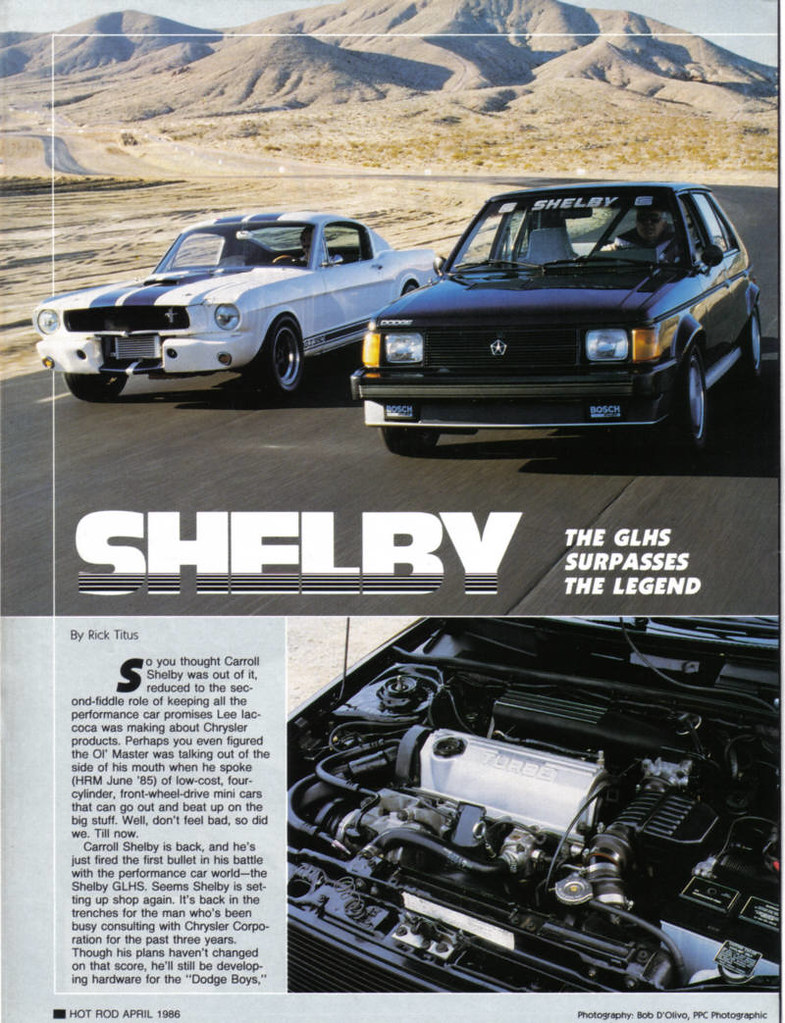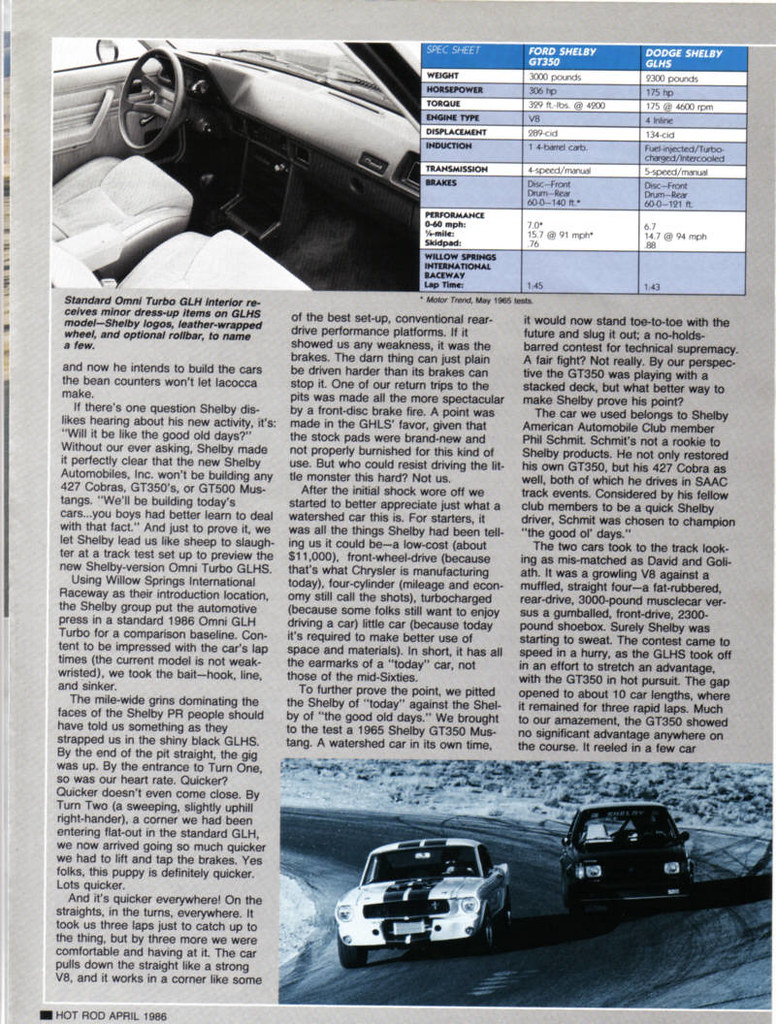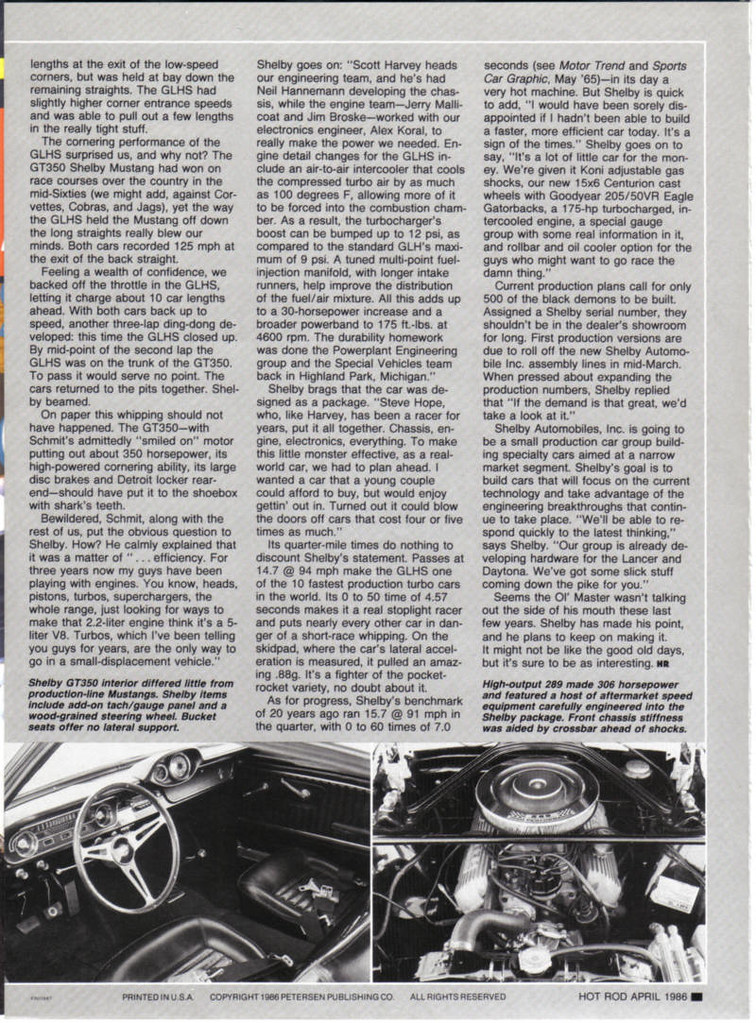Shelby, a name synonymous with high performance. Omni, a name that isn't.
It's more likely associated with the small hatchback offered by Dodge in the 1980s, and while it was practical, economical and efficient, nobody would ever have associated it with excitement or giant-killing performance. That all changed when Chrysler got the bright idea to introduce Shelby to Omni and watch the sparks fly: an iconic hot hatch was born. Yes, really. A cult hit that became one of the quickest production cars in 1980's America.

What the hell is an 'Omni', you ask? The US version of our own beloved (snigger) Chrysler/Talbot Horizon. Designed by Simca, the French division of Chrysler Europe in the 1970s and introduced in 1978, it survived in various guises until 1990. In France it was initially sold under the Simca brand, while elsewhere in Europe it was first badged as a Chrysler, then as a Talbot, the result of Chrysler's European car division being sold to Peugeot in 1979. The Horizon was the first British built mid-size hatchback - launched way before the Vauxhall Astra, the MKIII Ford Escort and the Austin Maestro.
 |
'Built To Win You Over', proclaimed the original TV ad.
Not with 1442cc of pushrod Simca powah, it won't |
Project C2 as it was known inside Simca during development, was intended to be that holiest of car company grails, a "world car", in this case, meaning that it was designed for both sides of the Atlantic. In reality, the European and American versions of the vehicle actually turned out to have very little in common. The American version of the Horizon - the Dodge Omni and Plymouth Horizon - appear to share the same external metalwork as the European version, but in reality the panels are not interchangeable. Under the skin, they were vastly different mechanically; the aged OHV Simca engine were replaced with a single-cam 1.7 litre Volkswagen one, with Chrysler-designed cylinder head and intake manifold, while MacPherson struts took the place of the torsion bar front suspension found in 'our' Horizon. Chrysler's own 2.2L OHC "Trenton" four-cylinder arrived in 1981 as an upmarket addition to the 1.7. Peugeot's 1.6 litre engine also played a cameo role, introduced in 1983 and dropped in 1986.

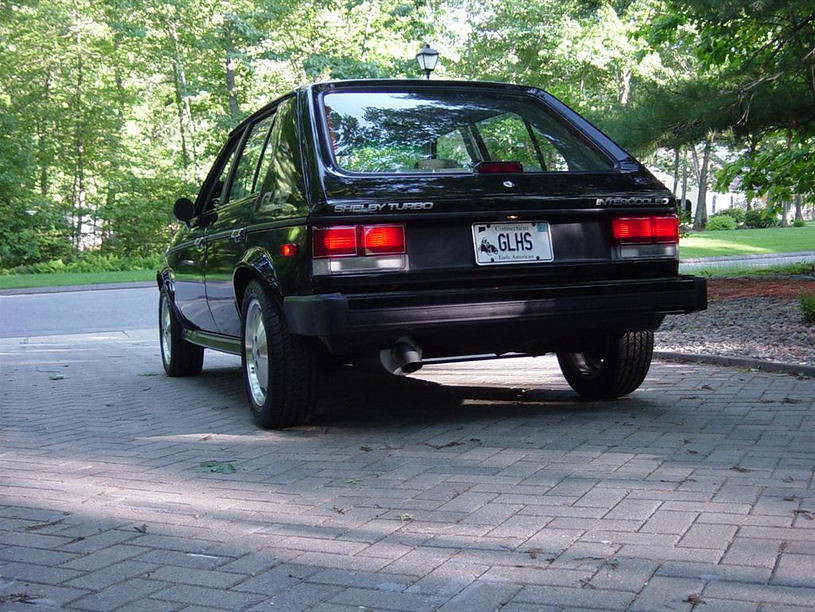
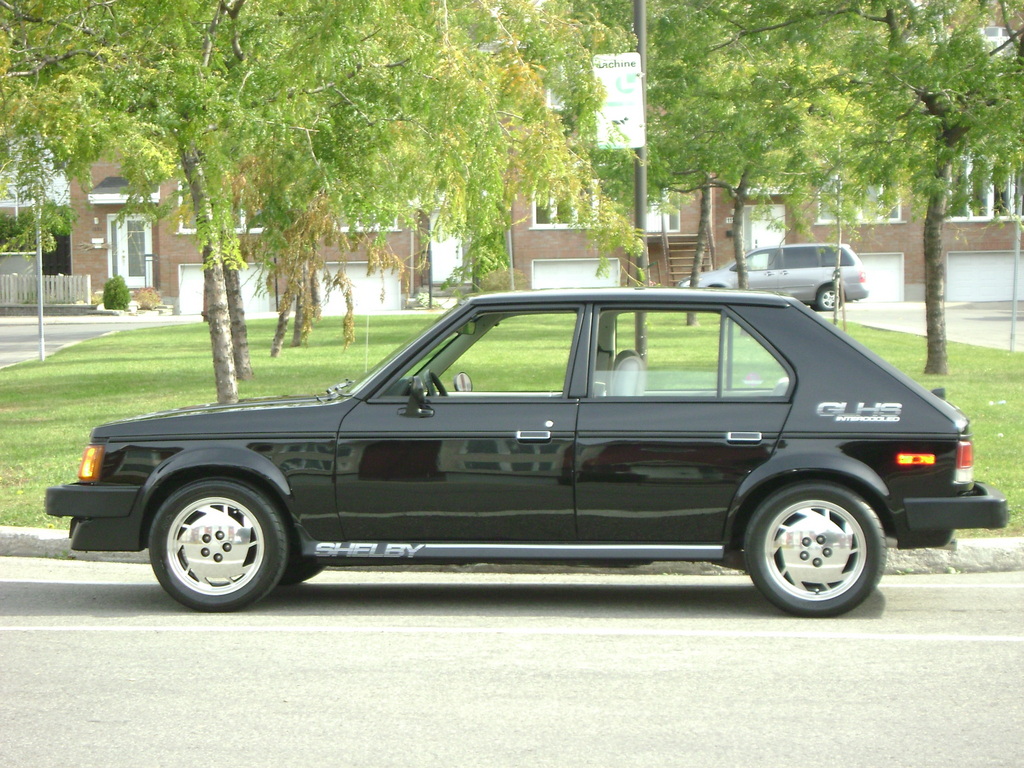
So the car was completely different from the bulkhead forwards under the skin. So much for a world car then. But, this American re-engineering did pave the way for performance variants - enter Mr. Carroll Shelby...
Lee Iaccoca, Chrysler CEO was a long-time friend and collaborator with Shelby. Iacocca was one of the driving forces behind the original Ford Mustang and the man who worked with Shelby on the iconic GT350H and helped Shelby get the Cobra into production.
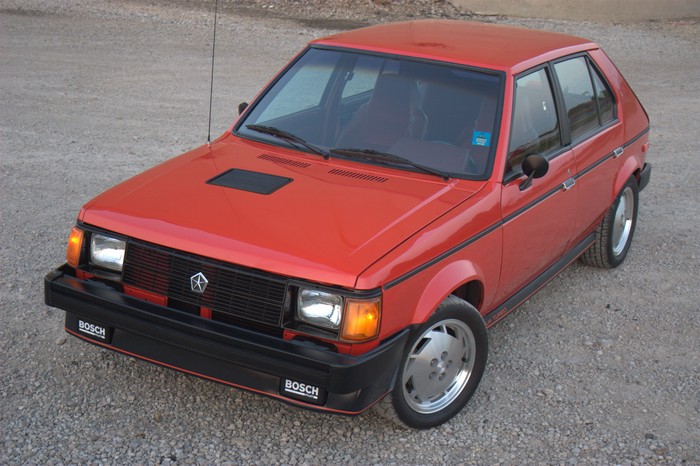 |
| Dodge Omni GLH |
The first fruit of this alliance was the 1983 Dodge Shelby Charger, based on the same 'L Platform' (in Chrysler-speak) as the Omni, so it was a natural progression to sprinkle the 'Shelbydust' on the worthy but dull Omni; the 1984 GLH was the result. The name was Shelby's choice, the initials GLH apparently stood for "Goes Like Hell". It carried over most of the modifications that had been made the previous year to the Shelby Charger. The GLH wasn't turbocharged, but the engine was tweaked to 110 bhp by way of a high-lift cam, a .020 decked block to bring up the compression to 9.0:1, and a Shelby rocker cover. The bodykit was an optional extra through Chrysler's Direct-Connection aftermarket tuning arm; this eventually was fitted as standard from 1985 onwards.
Billy Dee Williams selling Omnis; wouldn't he be better suited to selling Ford Falcons..?
Car & Driver magazine tested the GLH in 1985; they cracked 0-60 in 8.7 secs, quicker than a Rabbit (Golf) GTI by a full second. The 1/4 mile was completed in 16.7 secs with an 81 mph terminal speed while 70-0 mph was achieved in 195 feet with 0.83g in the skidpan, no doubt helped by 195/50/15 Goodyear Eagle GT rubber, bigger ventilated front discs, stiffer suspension and quicker steering. The cornering grip was higher than any FWD car
Car & Driver had ever tested to that point; more was to come.
1985 saw the debut of the the turbocharged 2.2 litre engine in the GLH. Shelby added a Garrett T3 turbo running at 7.2psi running through an air-to-air intercooler, with compression dropped to 8.1:1. A Shelby-developed, tuned length intake manifold with Bosch L-jet fuel injection took care of the fuelling. Power jumped to 146bhp at 5200rpm with torque being a useful 170lb/ft at 3600rpm. This set-up, combined with a low 2,200lb kerb weight certainly earned this car its name. All variants of the GLH continued into 1986, until the
summo canis of all Omni was unleashed.
1986 was the debut of the Shelby GLHS (Goes Like Hell, Som'more), with the turbocharged 2.2 litre 'Series II' engine, which meant forged pistons, conrods and crankshaft; compression was raised to 8.5:1, a larger Garrett T4 turbo was wound up to 12 psi with the intercooler growing to match, Power jumped again to 175bhp at 5300rpm and torque was slightly up to 175lb/ft. The chassis was heavily revised from the GLH, with 205/50/15 Goodyear Eagle gatorbacks on Shelby Centurion wheels, bigger brakes and thicker anti-roll bars front and rear, Koni adjustable dampers and 1" shorter rear springs. In the style of Henry Ford, the car was only available in black, adding to the menace. Curiously, an oil cooler was an optional extra; perhaps some kidology by the old master to convince GLHS owners take to the racetrack.
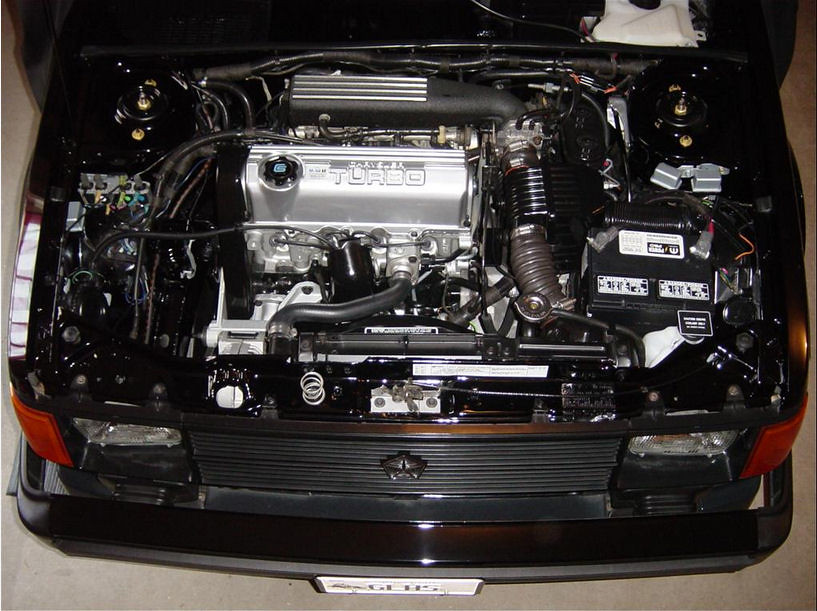
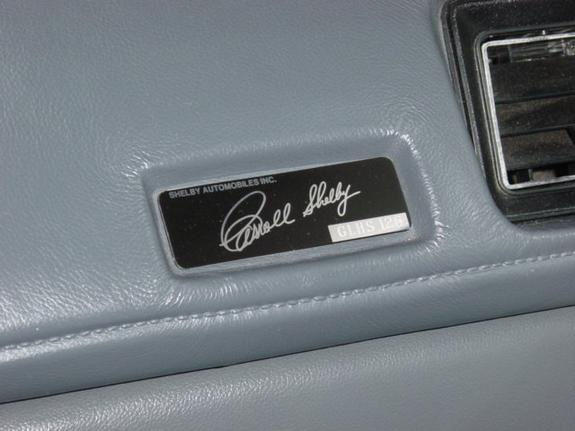


Note that this final car isn't, strictly speaking, a Dodge or Omni; the final 500 GLH cars were sold to Shelby, who used them as the basis for the GLHS. Every GLHS was modified/race prepped by Carroll Shelby's facility in Whittier, California and individually numbered, hence the dash plaque.
Production delays ensured that the GLHS wasn't launched until the spring of '86 and not late '85 as planned. To say the car caused a stir with reviewers is an understatement, to say the least. "Shelby GLHS WHIPS GT350!" declared the cover of April 86's
Hot Rod magazine. A comparison test with a 1966 Mustang GT350 declared the upstart Omni 2 seconds faster over a side-by -side lap at Willow Springs raceway and a second faster in the quarter-mile than the thoroughbred stallion. No doubt that got up Ford's nose, seeing a former ally - Carroll Shelby no less - not only helping a rival company but also embarrassing one of Ford's 'icon' cars in the process, with Shelby beaming on the front cover to rub further salt into the wound.
One story goes that at the official press launch, Mr Shelby himself was out on track giving joy rides to journalists in a GLHS prototype; everyone he took out returned several shades lighter than when they went out, so convincing a case he made for the GLHS's attributes. Official performance figures were sparkling: 0-60 in 6.5 secs, the 1/4 mile in 14.7 and .88g round the twistys, the trade-off being a harsher ride that could skip over bumpy surfaces.
The GLHS was sold through Shelby-endorsed Dodge dealerships for $10,995; no wonder they went out the door like, well, a turbocharged 80's hatchback...
Dedicated to Carroll Shelby.
With grateful thanks to all concerned for the raw info and use of the photos.

